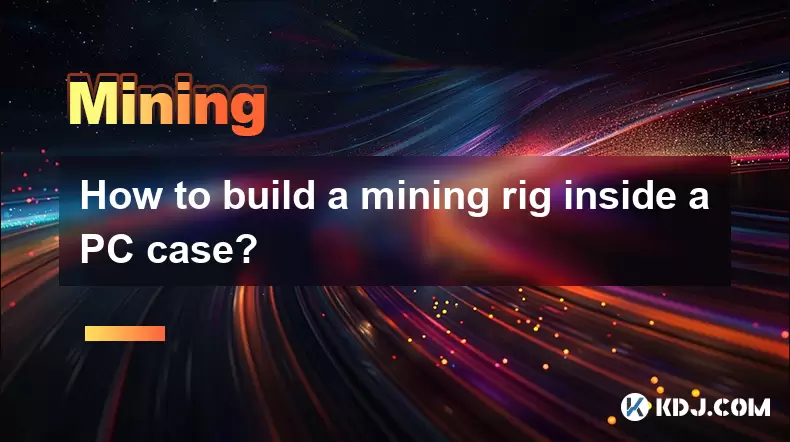-
 Bitcoin
Bitcoin $117500
2.15% -
 Ethereum
Ethereum $3911
6.19% -
 XRP
XRP $3.316
10.79% -
 Tether USDt
Tether USDt $1.000
0.01% -
 BNB
BNB $787.2
2.24% -
 Solana
Solana $175.2
4.15% -
 USDC
USDC $0.9999
0.00% -
 Dogecoin
Dogecoin $0.2225
8.40% -
 TRON
TRON $0.3383
0.28% -
 Cardano
Cardano $0.7868
6.02% -
 Stellar
Stellar $0.4382
9.34% -
 Hyperliquid
Hyperliquid $40.92
7.56% -
 Sui
Sui $3.764
7.63% -
 Chainlink
Chainlink $18.48
10.66% -
 Bitcoin Cash
Bitcoin Cash $582.1
1.88% -
 Hedera
Hedera $0.2601
6.30% -
 Avalanche
Avalanche $23.33
4.94% -
 Ethena USDe
Ethena USDe $1.001
0.02% -
 Litecoin
Litecoin $122.3
2.04% -
 UNUS SED LEO
UNUS SED LEO $8.969
-0.27% -
 Toncoin
Toncoin $3.339
0.86% -
 Shiba Inu
Shiba Inu $0.00001287
4.30% -
 Uniswap
Uniswap $10.43
7.38% -
 Polkadot
Polkadot $3.861
5.08% -
 Dai
Dai $1.000
0.02% -
 Bitget Token
Bitget Token $4.513
3.41% -
 Monero
Monero $267.7
-6.18% -
 Cronos
Cronos $0.1499
4.14% -
 Pepe
Pepe $0.00001110
5.15% -
 Aave
Aave $284.9
8.28%
Which motherboards support multi-system mining environments?
Multi-GPU mining needs motherboards with ample PCI-e slots, robust power delivery (VRMs), and BIOS support for multiple GPUs; high-end server boards are best.
Mar 07, 2025 at 03:12 am

Key Points:
- Not all motherboards are designed for multi-system mining. The key features to look for are multiple PCI-e slots and sufficient power delivery.
- The number of GPUs you can support depends on the motherboard's PCI-e lanes, power supply capabilities, and BIOS limitations.
- Different chipsets offer varying levels of PCI-e lane support, influencing the number of GPUs you can use effectively.
- High-end server motherboards are generally the best option for multi-GPU mining rigs due to their robust design and features.
- BIOS settings and driver compatibility are crucial for successful multi-GPU mining.
Which Motherboards Support Multi-System Mining Environments?
The question of which motherboards support multi-system mining environments hinges on several critical factors. Simply put, it's not just about the number of PCI-e slots; it's about the overall capacity of the motherboard to handle the power demands and data throughput required by multiple graphics cards (GPUs) simultaneously. Mining multiple cryptocurrencies simultaneously necessitates a robust system capable of managing the workload.
One of the primary considerations is the number of PCI-e slots available. Multi-GPU mining requires multiple GPUs, each needing its own PCI-e slot. However, the mere presence of slots isn't sufficient. The motherboard must have enough PCI-e lanes to support all the GPUs at their required speeds. A motherboard with only a few PCI-e x16 lanes might struggle to effectively utilize multiple high-end GPUs. Lower-speed PCI-e lanes (x1, x4, x8) will limit the bandwidth available to each GPU, significantly reducing overall mining efficiency.
The chipset plays a vital role. Different chipsets offer varying numbers of PCI-e lanes. High-end chipsets designed for workstations or servers typically offer significantly more PCI-e lanes than consumer-grade chipsets. Motherboards based on these server chipsets are better suited for large-scale multi-GPU mining operations.
Power delivery is another critical factor. GPUs consume a significant amount of power, especially when operating at high intensity. A motherboard with insufficient power delivery capabilities can lead to instability, crashes, and potentially damage to the components. Look for motherboards with robust VRMs (Voltage Regulator Modules) and sufficient power phases to handle the collective power draw of multiple GPUs.
Beyond the physical specifications, the BIOS plays a crucial role. The BIOS needs to support multiple GPUs and allow for proper configuration of the PCI-e slots. Some BIOS versions may have limitations on the number of GPUs they can support. It's essential to check the motherboard manufacturer's specifications and documentation to ensure compatibility.
Furthermore, driver compatibility is essential for multi-GPU mining. Ensure your chosen motherboard supports the latest drivers for your selected GPUs and the mining software you intend to use. Driver conflicts can severely impact performance or prevent your mining setup from functioning correctly. Inconsistent driver versions across multiple GPUs can lead to instability.
Finally, consider the overall size and form factor. Multi-GPU mining rigs often require large chassis to accommodate numerous GPUs, power supplies, and other components. Ensure your chosen motherboard is compatible with a case that can house your intended configuration. Consider the heat generated by multiple GPUs; sufficient cooling is vital to prevent overheating and system failures.
What are some examples of motherboards suitable for multi-GPU mining?
Many high-end server motherboards from manufacturers like Supermicro, Asus, and Gigabyte are well-suited for multi-GPU mining. These motherboards often feature numerous PCI-e slots, robust power delivery systems, and support for server-grade CPUs. However, specific model numbers change frequently, so always check the latest specifications and reviews before purchasing. Look for motherboards with ample PCI-e x16 slots, robust VRMs, and a BIOS that explicitly supports multiple GPUs.
How many GPUs can I use with a specific motherboard?
The number of GPUs you can use depends on several factors, including the number of available PCI-e lanes, the power supply's capacity, and the motherboard's BIOS limitations. Consult the motherboard's specifications for the maximum number of supported GPUs and the PCI-e lane configuration. Remember to account for the power consumption of each GPU and ensure your power supply has sufficient capacity to handle the load. Even if the motherboard technically supports more GPUs, thermal management and stability become increasingly challenging with a large number of GPUs.
What are the potential risks of using a motherboard not designed for multi-GPU mining?
Using a motherboard not designed for multi-GPU mining can lead to several risks. These include system instability, overheating, component damage, and data loss. Insufficient power delivery can cause the system to crash frequently, while inadequate cooling can lead to overheating and damage to GPUs and other components. Furthermore, using a motherboard with insufficient PCI-e lanes can significantly reduce mining efficiency.
Common Questions:
Q: Can I use a consumer-grade motherboard for multi-GPU mining?
A: While you might be able to use a consumer-grade motherboard, it's generally not recommended for multi-GPU mining, especially if you plan to use many GPUs. Consumer-grade motherboards often lack the robust power delivery and sufficient PCI-e lanes required for optimal performance and stability.
Q: What is the importance of a good power supply in a multi-GPU mining setup?
A: A powerful and reliable power supply is crucial for multi-GPU mining. GPUs consume significant power, and an inadequate power supply can lead to instability, system crashes, and even damage to components. Always choose a power supply with sufficient wattage and multiple PCI-e power connectors to support all your GPUs.
Q: How can I determine the PCI-e lane configuration of my motherboard?
A: The PCI-e lane configuration is usually specified in the motherboard's specifications, either in the manual or on the manufacturer's website. You can also find this information through software like CPU-Z. It's vital to understand the configuration to ensure your GPUs are utilizing their full potential.
Q: What software can I use to monitor the health and performance of my multi-GPU mining rig?
A: Several software applications allow you to monitor the health and performance of your multi-GPU mining rig. These applications can provide real-time data on temperature, fan speed, power consumption, and hashrate. Examples include MSI Afterburner, HWMonitor, and specialized mining monitoring tools.
Disclaimer:info@kdj.com
The information provided is not trading advice. kdj.com does not assume any responsibility for any investments made based on the information provided in this article. Cryptocurrencies are highly volatile and it is highly recommended that you invest with caution after thorough research!
If you believe that the content used on this website infringes your copyright, please contact us immediately (info@kdj.com) and we will delete it promptly.
- SNEK, Cardano, and the Contributor's Conundrum: A Meme Coin's Fight for Recognition
- 2025-08-08 16:30:12
- Toshi Crypto's Wild Ride: Rally, Demand Slump, and What's Next
- 2025-08-08 16:30:12
- Ethereum, Staking Yields, and DeFi Exposure: A New Era for Investors?
- 2025-08-08 15:10:12
- Unilabs Pumps MIA, Binance Coin Bouncing Back, and Ethereum's Bearish Blues
- 2025-08-08 15:10:12
- Ethereum's Wyckoff Markup and Market Rotation: A New Era?
- 2025-08-08 15:30:12
- Ethereum, Vitalik Buterin, and the Overleveraged Game: A Balancing Act
- 2025-08-08 15:30:12
Related knowledge

What is "proof-of-work" and how does it relate to mining?
Aug 07,2025 at 02:03pm
Understanding the Concept of Proof-of-WorkProof-of-work (PoW) is a consensus mechanism used in blockchain networks to validate transactions and secure...

What are the differences between mining on Windows vs. Linux?
Aug 06,2025 at 11:29pm
Overview of Cryptocurrency Mining PlatformsCryptocurrency mining involves using computational power to solve complex cryptographic puzzles and validat...

How to use an old computer for cryptocurrency mining?
Aug 07,2025 at 12:42pm
Understanding the Feasibility of Using an Old Computer for MiningUsing an old computer for cryptocurrency mining may seem outdated, but it is still te...

Can you mine cryptocurrency using solar power?
Aug 07,2025 at 12:00am
Understanding the Basics of Cryptocurrency MiningCryptocurrency mining involves validating transactions on a blockchain network by solving complex cry...

How to build a mining rig inside a PC case?
Aug 06,2025 at 11:01pm
Understanding the Basics of a Mining Rig in a PC CaseBuilding a mining rig inside a PC case involves transforming a standard computer chassis into a d...

What are the best cryptocurrencies to mine with an ASIC?
Aug 08,2025 at 01:22am
Understanding ASIC Mining and Its Role in CryptocurrencyASIC stands for Application-Specific Integrated Circuit, a specialized hardware designed to pe...

What is "proof-of-work" and how does it relate to mining?
Aug 07,2025 at 02:03pm
Understanding the Concept of Proof-of-WorkProof-of-work (PoW) is a consensus mechanism used in blockchain networks to validate transactions and secure...

What are the differences between mining on Windows vs. Linux?
Aug 06,2025 at 11:29pm
Overview of Cryptocurrency Mining PlatformsCryptocurrency mining involves using computational power to solve complex cryptographic puzzles and validat...

How to use an old computer for cryptocurrency mining?
Aug 07,2025 at 12:42pm
Understanding the Feasibility of Using an Old Computer for MiningUsing an old computer for cryptocurrency mining may seem outdated, but it is still te...

Can you mine cryptocurrency using solar power?
Aug 07,2025 at 12:00am
Understanding the Basics of Cryptocurrency MiningCryptocurrency mining involves validating transactions on a blockchain network by solving complex cry...

How to build a mining rig inside a PC case?
Aug 06,2025 at 11:01pm
Understanding the Basics of a Mining Rig in a PC CaseBuilding a mining rig inside a PC case involves transforming a standard computer chassis into a d...

What are the best cryptocurrencies to mine with an ASIC?
Aug 08,2025 at 01:22am
Understanding ASIC Mining and Its Role in CryptocurrencyASIC stands for Application-Specific Integrated Circuit, a specialized hardware designed to pe...
See all articles

























































































